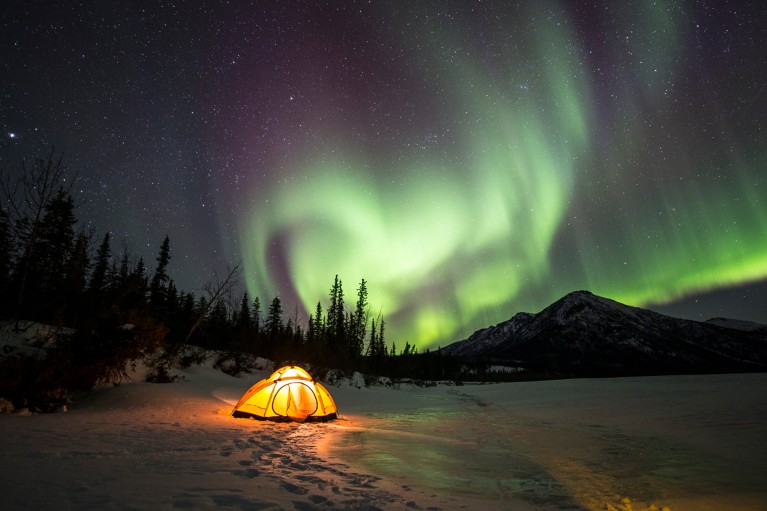Gigantic oddball aurora seen from Earth for the first time [View all]
21 June 2024
A camera captured the vast, diffuse glow produced after the solar wind dropped to a whisper.
By Alexandra Witze

Green aurora borealis over an illuminated yellow tent by a frozen river at night.
Garden-variety auroras (pictured) take the form of pillars or curtains of light, whereas polar rain auroras are seen as diffuse glows across the sky. Credit: Chris Madeley/Science Photo Library
On Christmas night in 2022, a massive aurora lit up the sky for thousands of kilometres around the North Pole1. The light show gave scientists a unique glimpse of the elusive ‘polar rain aurora’, a rare shimmering phenomenon that forms when energetic electrons from the Sun cascade onto Earth’s polar regions.
Auroras form when charged particles flowing from the Sun hit and interact with Earth’s magnetic field. Their energy is usually transformed into light shows of dancing green curtains, towering red pillars, or other spectacles such as those that dazzled skywatchers around the world in May.
Polar rain auroras are a special type that form when electrons travelling directly from the Sun's corona, or outermost atmosphere, crash into Earth's atmosphere. Polar rain auroras are a special type that form when electrons travelling directly from the Sun's corona, or outermost atmosphere, crash into Earth's atmosphere. These auroras are rare because there are seldom enough of these electrons hitting the atmosphere to generate a glow. And other types of charged particles often interfere with these electrons, preventing polar rain auroras from forming.
When the wind died
But for 28 hours in December 2022, the flood of other solar particles — known as the solar wind — dropped to a trickle. The polar rain electrons showered unimpeded onto Earth, creating a greenish glow that spanned more than 3,000 kilometres across the North Pole.
More:
https://www.nature.com/articles/d41586-024-02072-7
